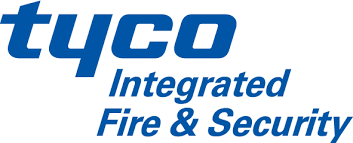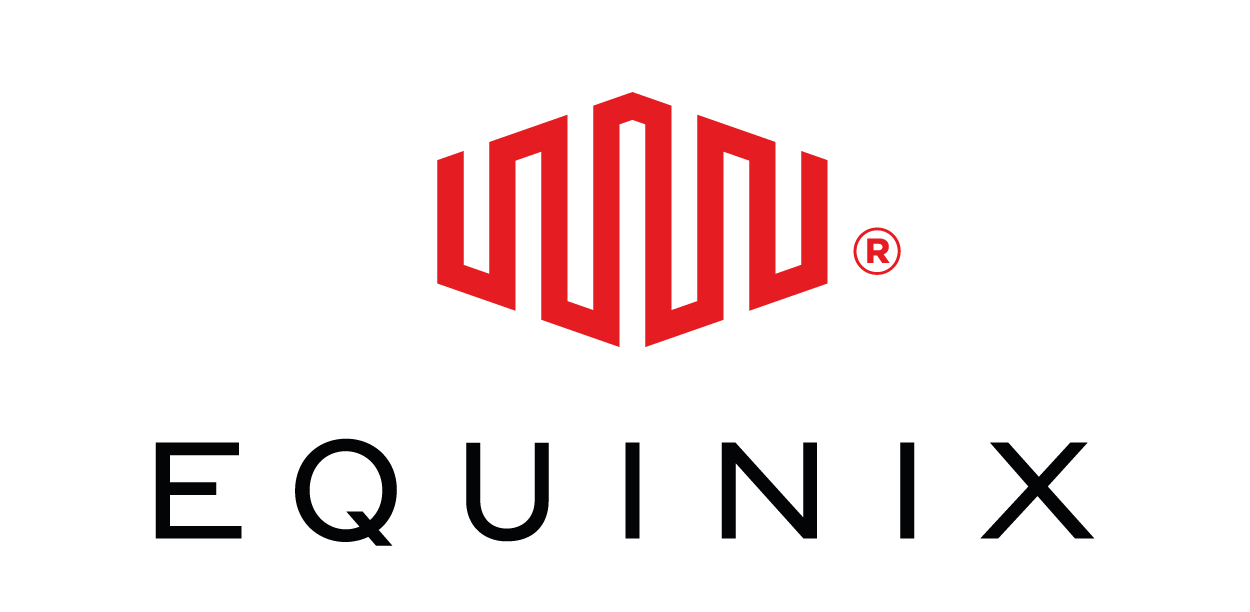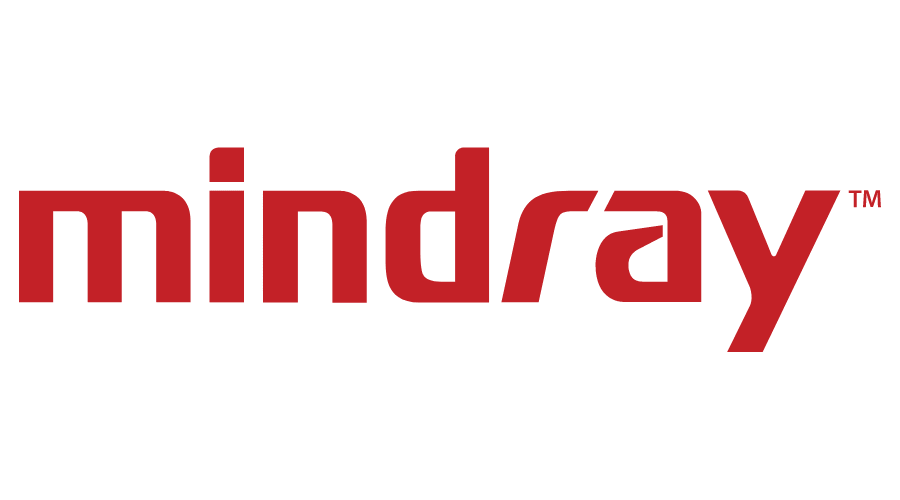
CompTIA Network+ Course
-
Price
£195.00 including VAT (was £495.00)
Save £300.00
Offer ends 30 April 2024 - Course Type Online Course
- Course Duration 34 Hours
- Course Access 12 Months
- Awarded By CompTIA
-
Exam VoucherAdd CompTIA N+ Exam Voucher (£235.00)
- Student Discount Card Yes
This CompTIA Network+ course is based on the N10-007 exam objectives. To enrol on the latest Network+ course, please visit CompTIA Network+ N10-008 course.
CompTIA Network+ validates the knowledge and skills of networking professionals. You can kick start your network career or improve on the networking skills you already have with this vendor-neutral CompTIA Network+ course. Learn to configure, manage, secure, and troubleshoot both wired and wireless networks, as you prepare for CompTIA’s N10-007 certification exam.
What's included in this CompTIA Network+ Course?
- 12 Months Unlimted Access
- CompTIA Network+ Online Course.
- Online video tutorials created by expert instructors.
- Downloadable workbooks.
- Practice quizzes after each module.
- Flashcard and educational games.
*Enrol by Friday to get an extra 25% OFF your CompTIA Network+ course. Use promo code MTA25 in checkout to claim your savings today.
Learning Objective
The CompTIA Network+ course offers everything you need to get you ready for your Network+ certification exam.
By the end of this course delegates will be able to:
- Describe networking concepts.
- Explain the function and installation of network infrastructure components.
- Describe network operations concepts and implementation.
- Describe network security concepts and implementation.
- Explain network troubleshooting techniques and tool usage.
- Have sufficient knowledge to sit the Network+ exam.
Why should I get N+ certified?
CompTIA Network+ Certification is the leading vendor-neutral, globally-recognised networking certification and is recommended as a first professional-level networking certification. As the demand for skilled network support professionals grows, Network+ is quickly becoming the standard for networking competency. Network+ is the perfect entry point into a networking career.
Once certified, you’ll be qualified for jobs such as 1st Line Support Engineer and Network Technician, earning an average salary of £37,500.00 per year - as well as ready to build on these fundamentals and specialise in your preferred area with further CompTIA certifications.
Recommended Experience
- A CompTIA A+ certification or equivalent experience.
- At least 1 year of experience supporting TCP/IP networks.
Bulk discounts
Bulk discounts are available on purchases of 10 or more courses.
If you wish to discuss a large individual order for this course, and/or would like to be invoiced in advance, please call our sales team on 0808 175 1269 to make an enquiry.
This Network+ training is considered entry-level CompTIA training, which means it was designed for new IT professionals. This course is valuable for new IT professionals with at least a year of experience with routing and switching, and experienced network administrators looking to validate their basic networking skills.
New or aspiring network administrators. If you’re new to network administration, you probably haven’t yet made a name for yourself in one of the many niches that exist for network administrators to excel within. Eventually in your career, you’ll deal with replacing and updating hardware, integrating cloud computing, and anticipating security vulnerabilities, and this training can prepare you for all of it. Developed to help you eventually earn your Network+ (N10-007) certification from CompTIA, it’ll make you a network administration pro.
Experienced network administrators. If you’re a network administrator with several years of experience, you’ve realized by now the need for familiarity with all manner of networking devices and solutions. No company needs someone to configure and manage only one network device. There are mobile, cloud, virtualization, and wireless devices that need security, hardware and software expertise. The Network+ (N10-007) certification from CompTIA can prove your mastery of these topics and this training can prepare you for it.
To earn your official Network+ certification from CompTIA, you will need to study the CompTIA Network+ training course and pass the compulsory CompTIA Network+ exam.
Exam Code:
- CompTIA N10-007
To prepare you for your exam, we provide interactive quizzes after each module and a mock exam at the end of your course to ensure you’re fully prepared for the real thing. Once you’ve passed with at least 85%, you’ll be ready to book your exam as a private candidate. To make life easier, we can help you find an appropriate exam centre and give you all the information you need to secure your place.
Please note that the CompTIA exam fees aren’t included in the course price. To find the latest exam prices, visit:
Once you’re fully prepared and ready to sit your exam, all you’ll have to do is purchase your exam voucher and schedule your exam at a test centre near you. You can use the Pearson Vue Test Locator to find test centre locations near you. For more information on how to schedule your exams, please visit our schedule my exams page.
Got a question about exams? Contact our course advisors by email or by phone on 0808 175 1269. We're happy to help!
Our training works on all devices including Mobile phones, IPad’s, Android tablets, Macs and PC’s.
For the best viewing experience on our state-of-the-art eLearning platform we recommend an internet connection of 10Mbps or better. Please also use Google Chrome or Mozilla Firefox as your browser with Adobe Flash Player.
CompTIA Certifications are one of the most highly recognized IT standards in the industry, with over two million professionals certified worldwide. The majority of HR managers believe IT certifications are a reliable predictor of successful employees, and they also believe that certifications will become even more important in the coming years.
Certifications = Better Performance, Higher Pay. Businesses also report that CompTIA certified employees routinely perform better than their non-certified counterparts.
With so many benefits, CompTIA certifications are the logical choice for IT professionals looking to gain a competitive edge.
Unlike other vendor-specific networking certifications, CompTIA Network+ prepares you to support the network regardless of the platform. It forms the foundation you need before specializing in a vendor solution. CompTIA Network+ is the only industry certification that covers both wired and wireless networks.
CompTIA’s Network+ validates the knowledge and skills needed to troubleshoot, configure and manage wired and wireless networks found in companies around the world. CompTIA Network+ certifies a professional-level understanding of emerging technologies, including cloud and virtualization technologies.
Yes. You can call or email us whenever you are ready to sit the exam.
We've put together a list of relevant job titles you can apply for after achieving the CompTIA Network+ certification (note that some careers may require further study, training and/or work experience):
- Network Installer
- Network Manager
- Network Technician
- Network Administrator
- Network Support Engineer
- 1st Line Support
- 2nd Line Support
- How to put together a killer CV, Covering Letters and Thank You emails.
- How to gain relevant work experience.
- How to prepare for interviews.
- How to understand Job adverts.
- How to choose the right recruitment agency.
- How to look for work on LinkedIn.
- Information on dealing with redundancy.
Career Advice
Once you have achieved your certification, you'll have full access to our recruitment package for a wide range of information and advice - including:
Our careers advice section is available for you to see now. For more information about our career advice services, contact us on 0808 175 1269 to speak with one of our friendly course advisors today.
Career Development
Getting a CompTIA certification will always help you stand out from the crowd, now and in the future - whether you're just starting out, developing your career, or changing direction entirely.
Research by e-Skills UK has shown that IT and telecommunications now employs 1 in 20 of the UK workforce. It also suggests the digital sector will need nearly 300,000 new recruits by 2020 to meet the demand for skills in this area.
CompTIA Network+ N10-007 Course Content
Prerequisites
Students taking this course should meet the following pre-requisites:
• CompTIA A+ certification or equivalent experience
• At least 1 year of experience supporting TCP/IP networks
Course Objectives
By the end of this course, you will:
- Describe basic networking concepts
- Describe network infrastructure and explain how to deploy common network components
- Describe network operations and explain how to support a production network
- Describe network security concepts and explain how to implement basic network security
- Describe network troubleshooting and explain how to use common tools to troubleshoot a network
Lab Setup
To enhance learning and reinforce concepts, students can participate in the activities as desired. To prepare your own lab environment, please see the lab setup manual CompTIA Network+ N10-007 Course Lab Setup Guide.
NOTE:
Some activities in this course include demonstrations using real-world tools. It is NOT a requirement to
purchase or use these tools for successful completion of this course.
Students are not expected to demonstrate the use of any particular tool during the exam. You WILL, however, have to be able to explain the purpose of all of the tools, how they work in general, and when it is appropriate to choose one particular tool over another.
Module 1 – Networking Concepts
1.1 Basic Networking
You will explain basic networking.
Topics covered:
- Intro to networking
- Networking architectures
- Activity Basic Networking
1.2 OSI Model
You will explain devices, applications, protocols, and services at their appropriate OSI layers.
Topics covered:
- Layer 7 – Application
- Layer 6 – Presentation
- Layer 5 – Session
- Layer 4 – Transport
- Layer 3 – Network
- Layer 2 – Data Link
- Layer 1 – Physical
- Activity Exploring the OSI Model
1.3 Protocols and Ports
You will explain the purposes and uses of ports and protocols.
Topics covered:
- Protocols and ports overview
- Activity Examining Protocols and Ports
- Connection-oriented vs. connectionless
- Transmission Control Protocol (TCP)
- User Datagram Protocol (UDP)
- Activity Comparing TCP and UDP
- Internet Protocol (IP)
- Internet Control Messaging Protocol (ICMP)
- Internet Group Messaging Protocol (IGMP)
- Activity Examining the Lower Layer Protocols
- Layer 7 Remote Control Protocols
- Layer 7 File Transfer Protocols
- Layer 7 Messaging Protocols
- Activity Examining Messaging Protocols
- Layer 7 Web Traffic Protocols
- Layer 7 Streaming Media Protocols
- Layer 7 Infrastructure Management Protocols
1.4 Switching
You will explain the concepts and characteristics of switching.
Topics covered:
- Packet-switched vs. circuit-switched networks
- Properties of Network Traffic
- Contention Management
- Activity Creating Collision and Broadcast Domains
- Interface Properties and Segmentation
- Activity Creating a Basic Network Segment
- Switching prt 2
- Activity Switching
- Switching Loop Management
- Activity Managing Switching Loops
- VLANs
- Activity Creating VLANs
1.5 Routing
You will explain the concepts and characteristics of routing.
Topics:
- ARP
- Activity Examining ARP
- IP Addressing Basics
- Activity Configuring IP
- Routers
- Activity Setting Up a Router
- Routing Basics
- Activity Adding Static Routes
- VLAN Routing
- Activity Routing Between VLANs
- NAT/PAT
- Activity Configuring NAT/PAT
- Routing Protocols
- Activity Configuring a Routing Protocol
- Firewalls
- Activity Configuring Firewalls
1.6 Advanced Switching and Routing Concepts
You will explain advanced switching and routing concepts.
Topics:
- IPv6 Concepts
- Activity Exploring IPv6
- Performance Concepts
- Distributed Switching
- Software-defined Networking
1.7 IP Addressing
You will, given a scenario, configure the appropriate IP addressing components.
Topics:
- Public vs. Private
- Loopback and Reserved
- Subnet Mask
- Default Gateway
- Virtual IP
- Subnetting
- Activity Learning to Subnet
- Address Assignments
1.8 Network Types and Topologies
You will compare and contrast the characteristics of network topologies, types and technologies.
Topics:
- Wired Topologies
- Wireless Topologies
- Network Types
- Technologies that Facilitate the Internet Of Things (IoT)
- (No activity for this chapter)
1.9 Wireless Technologies
You will, given a scenario, implement the appropriate wireless technologies and configurations.
Topics:
- Radio Basics
- 802.11 Standards
- Wi-Fi Frequencies
- Wi-Fi Antenna Concepts
- Bluetooth
- Cellular
- Site Surveys
- Activity Using an RF Spectrum Analyzer
1.10 Cloud Concepts
You will summarize cloud concepts and their purposes.
Topics:
- Types of Services
- Cloud Delivery Models
- Security Implications/Considerations
- Activity Exploring Cloud Services
1.11 Network Services
You will explain the functions of network services.
Topics covered:
- DNS Service
- Activity Setting up DNS
- DHCP Service
- Activity Setting Up DHCP
- NTP
- IPAM
Module 2 – Infrastructure
2.1 Cabling Solutions
You will, given a scenario, deploy the appropriate cabling solution.
Topics covered:
- Media Types
- Activity Testing a Fiber Optic Cable
- Plenum vs. PVC
- Connector Types
- Activity Crimping on an RJ-45 Connector
- Transceivers
- Termination Points
- Activity Terminating Cable to a 110 Block
- Copper Cable Standards
- Copper Termination Standards
- Activity Creating a Crossover Cable
- Ethernet Deployment Standards
2.2 Network Device Placement and Installation
You will, given a scenario, determine the appropriate placement of networking devices on a
network and install/configure them.
Topics covered:
- Network Interface
- Repeater
- Hub
- Bridge
- Switch
- Router
- Modem
- Wireless Access Point
- Activity Setting up a WAP
- Firewall
- Media Converter
- Wireless Range Extender
- VoIP Endpoint
2.3 Advanced Network Devices
You will explain the purposes and use cases for advanced networking devices.
Topics covered:
- Multilayer Switch
- Wireless Controller
- Load Balancer
- IDS/IPS
- Proxy Server
- Activity Configuring Proxy Settings
- VPN Concentrator
- AAA/RADIUS Server
- UTM Appliance
- NGFW/Layer 7 Firewall
- VoIP PBX
- VoIP Gateway
- Content Filter
2.4 Virtualization and Network Storage Technologies
You will explain the purposes of virtualization and network storage technologies.
Topics covered:
- Virtual Networking Components
- Network Storage Types
- Connection Types
- Jumbo Frames
- (No activity for this chapter)
2.5 WAN Technologies
You will compare and contrast WAN technologies.
Topics covered:
- Service Types
- Transmission Mediums
- Characteristics of Service
- Activity Configuring WAN Links
- Termination
Module 3 – Network Operations
3.1 Documentation
You will, given a scenario, use appropriate documentation and diagrams to manage the
network.
Topics covered:
- Diagram Symbols
- Standard Operating Procedures/Work Instructions
- Logical vs. Physical Diagrams
- Rack Diagrams
- Change Management Documentation
- Wiring and Port Locations
- IDF/MDF Documentation
- Labeling
- Network Configuration and Performance Baselines
- Inventory Management
- Activity Using Documentation
3.2 Business Continuity and Disaster Recovery
You will compare and contrast business continuity and disaster recovery concepts.
Topics covered:
- Availability Concepts
- Recovery
- Activity Backing Up Your Data
- MTTR
- MTBF
- SLA Requirements
3.3 Scanning, Monitoring, and Patching
You will explain common scanning, monitoring and patching processes and summarize their
expected outputs.
Topics covered:
- Processes
- Event Management
- SNMP Monitors
- Metrics
- Activity Testing the Network
3.4 Remote Access Methods
You will, given a scenario, use remote access methods.
Topics covered:
- VPN
- RDP
- SSH
- VNC
- Telnet
- HTTPS/Management URL
- Remote File Access
- Out-of-Band Management
- Activity Making Remote Connections
3.5 Policies and Best Practices
You will identify policies and best practices.
Topics covered:
- Privileged User Agreement
- Password Policy
- On-boarding/Off-boarding Procedures
- Licensing Restrictions
- International Export Controls
- Data Loss Prevention
- Remote Access Policies
- Incident Response Policies
- BYOD
- AUP
- NDA
- System Life Cycle
- Safety Procedures And Policies
- Activity Creating Policies and Procedures
Module 4 – Network Security
4.1 Physical Security Devices
You will summarize the purposes of physical security devices.
Topics covered:
- Detection
- Prevention
- (No activity for this chapter)
4.2 Authentication and Access Control
You will explain authentication and access controls.
Topics covered:
- Authorization, Authentication, and Accounting
- Multifactor Authentication
- Access Control
- Activity Examining Access Control Mechanisms
4.3 Basic Wireless Network Security
You will, given a scenario, secure a basic wireless network.
Topics covered:
- WPA
- WPA2
- TKIP-RC4
- CCMP-AES
- Authentication and Authorization
- Geofencing
- Activity Demonstrating the Need for Wireless Security
4.4 Common Network Attacks
You will summarize common networking attacks.
Topics covered:
- DoS
- Social Engineering
- Insider Threat
- Logic Bomb
- Rogue Access Point
- Evil Twin
- War-driving
- Phishing
- Ransomware
- DNS Poisoning
- ARP Poisoning
- Spoofing
- Deauthentication
- Brute Force
- VLAN Hopping
- Man-in-the-Middle
- Exploits vs. Vulnerabilities
- Activity Conducting a Phishing Attack
4.5 Network Device Hardening
You will, given a scenario, implement network device hardening.
Topics covered:
- Changing Default Credentials
- Avoiding Common Passwords
- File Hashing
- Generating New Keys
- Activity Supporting Secure Authentication and Encryption
- Upgrading Firmware
- Patching and Updates
- Disabling Unnecessary Services
- Using Secure Protocols
- Disabling Unused Ports
4.6 Common Mitigation Techniques
You will explain common mitigation techniques and their purposes.
Topics covered:
- Signature Management
- Device Hardening
- Change Native VLAN
- Switchport Protection
- Network Segmentation
- Privileged User Account
- File Integrity Monitoring
- Role Separation
- Restricting Access Via ACLs
- Honeypot/Honeynet
- Penetration Testing
- Activity Implementing a Honeypot
Module 5 – Network Troubleshooting and Tools
5.1 Network Troubleshooting Methodology
You will explain the network troubleshooting methodology.
Topics covered:
- Identify the Problem
- Establish a Theory of Probable Cause
- Test the Theory to Determine the Cause
- Establish a Plan of Action to Resolve the Problem and Identify Potential Effects
- Implement the Solution or Escalate as Necessary
- Verify Full System Functionality and , if Applicable, Implement Preventive Measures
- Document Findings, Actions, and Outcomes
- (No activity for this chapter)
5.2 Using the Appropriate Tool
You will, given a scenario, use the appropriate tool.
Topics covered:
- Hardware Tools – Basic Hand Held
- Hardware Tools – Analyzers
- Activity Troubleshooting with Hardware Tools
- Software Tools – Testers and Analyzers
- Activity Troubleshooting with Software Tools
- Software Tools – Command Line
- Activity Using Command Line Tools
5.3 Troubleshoot Wired Connectivity and Performance
You will, given a scenario, troubleshoot common wired connectivity and performance issues.
Topics covered:
- Signal Issues:
- Attenuation
- Latency
- Jitter
- Crosstalk
- EMI
- Activity Troubleshooting Signal Problems
Physical Issues:
- Open/short
- Incorrect pin-out
- Incorrect Cable Type
- Bad Port
- Damaged cable
- Bent pins
Transceiver Issues:
- Transceiver mismatch
- TX/RX reverse
- Duplex/speed mismatch
- Activity Troubleshooting Transceiver Problems
- Traffic Flow Issues:
- Bottleneck
- VLAN mismatch
- Network connection LED status indicators
5.4 Troubleshoot Wireless Connectivity and Performance
You will, given a scenario, troubleshoot common wireless connectivity and performance issues.
Topics covered:
Signal Loss:
- Attenuation
- Reflection
- Refraction
- Absorption
- Latency & Jitter
Antenna Issues:
- Incorrect antenna type
- Incorrect antenna placement
- Incorrect WAP type
WAP Issues:
- Interference
- Channel overlap
- Overcapacity
- Distance limitations
- Frequency mismatch
- Power levels
- Signal-to-noise ratio
WAP Misconfiguration:
- Wrong SSID
- Wrong passphrase
- Security type mismatch
- Activity Troubleshooting WAP Issues
5.5 Troubleshoot Common Network Service Issues
You will, given a scenario, troubleshoot common network service issues.
Topics covered:
Common Network Issues:
- Physical Connectivity
- Incorrect IP Address
- Incorrect Gateway
- Incorrect Netmask
- Names Not Resolving
- Untrusted SSL Certificate
DHCP Issues:
- Duplicate IP Addresses
- Expired IP Address
- Rogue DHCP
- Exhausted DHCP Scope
Firewall/ACL Issues:
- Blocked TCP/UDP Ports
- Incorrect Host-based Firewall Settings
- Incorrect ACL Settings
Advanced Network Issues:
- DNS Server Issues
- Duplicate MAC Addresses
- Incorrect Time
- Unresponsive Service
- Hardware Failure
Activity Case Study:
- Troubleshooting an Unusual
-

EXPERT INSTRUCTOR-LED TRAINING
We only uses the industry’s finest instructors to develop our courses. They have a minimum of 15 years real-world experience and are subject matter experts in their fields. Unlike a live class, you can fast-forward, repeat or rewind all your lectures. This creates a personal learning experience and gives you all the benefit of hands-on training with the flexibility of doing it around your schedule 24/7.
-

QUIZZES & EXAM SIMULATORS
Our custom practice exams prepare you for your exams differently and more effectively than the traditional exam preps on the market. You will have practice quizzes after each module to ensure you are confident on the topic you have completed before proceeding. This will allow you to gauge your effectiveness before moving to the next module in your course. Our Courses also include practice exams designed to replicate and mirror the environment in the testing centre. These exams are on average 100 questions to ensure you are 100% prepared before taking your certification exam.
-

VISUAL DEMONSTRATIONS & MULTIMEDIA PRESENTATIONS
Our courseware includes instructor-led demonstrations and visual presentations that allow students to develop their skills based on real world scenarios explained by the instructor. Our Courseware always focuses on real world scenarios and skill-set development.
-

NAVIGATION & CONTROLS
Our self-paced training programs are designed in a modular fashion to allow you the flexibility to work with expert level instruction anytime 24/7. All courses are arranged in defined sections with navigation controls allowing you to control the pace of your training. This allows students to learn at their own pace around their schedule.
-

SOCIAL LEARNING & NETWORKING
We Have designed a world class Learning Management System (LMS). This system allows you to interact and collaborate with other students, form study groups, engage in discussions in our NOW@ Forums, rate and “like” different courses and stay up to date with all the latest industry knowledge through our forums, student contributions and announcement features. This LMS is unmatched in the industry and makes learning fun and enjoyable.
-

FLASH CARDS & EDUCATIONAL GAMES
Our Courseware knows that education is not a one size fits all approach. Students learn in different ways through different tools. That is why we provide Flash Cards and Education Games throughout our courses. This will allow you to train in ways that keep you engaged and focused. Each course will have dozens of Flash Cards so you can sharpen your skill-sets throughout your training as well as educational games designed to make sure your retention level of the materials is extremely high.
-

12 MONTHS UNLIMITED ACCESS
Each student will have 12 months unlimited access to allow you to have access to the training anytime 24/7.
For purchases of 1 to 9 user enrolments select the number of users you require and add the course to your shopping basket by selecting Add to Basket. You will then be able to make payment using most credit and debit cards or a PayPal account. Once payment is confirmed, we’ll process your order and email your course login instructions.
For a licence for 10 or more user enrolments, discounts, or if you would like to pay by BACs transfer or by invoice, please contact us on 0808 175 1269 or email sales@mytrainingacademy.org.uk.
Purchase Order Payments: To pay and enrol for courses using a purchase order (PO), please email your PO details to sales@mytrainingacademy.org.uk.
All students enrolled on this course are eligible to apply for a TOTUM PRO Card, which offers discounts in a wide range of shops and websites, helping you get money off food, holidays and flights, clothes, make-up gym memberships and much more.
TOTUM PRO card is aimed at professional learners, giving you access to exclusive discounts. Explore the full list of offers.
We make it our absolute mission to give you the training you need and the service you deserve. Hear what our students say about us...

By purchasing a course on My Training Academy, you become a part of our community and are eligible to sign up for TOTUM Pro, the student discount card that provides a host of benefits. Join our community today and start saving on your favourite brands.







Save £300.00

Privacy
Protected
Secure
Checkout
















